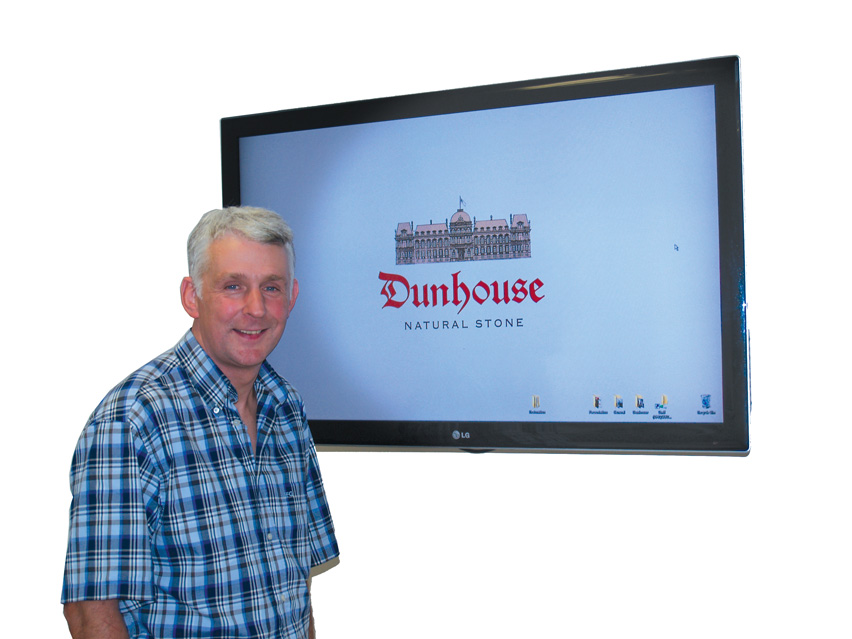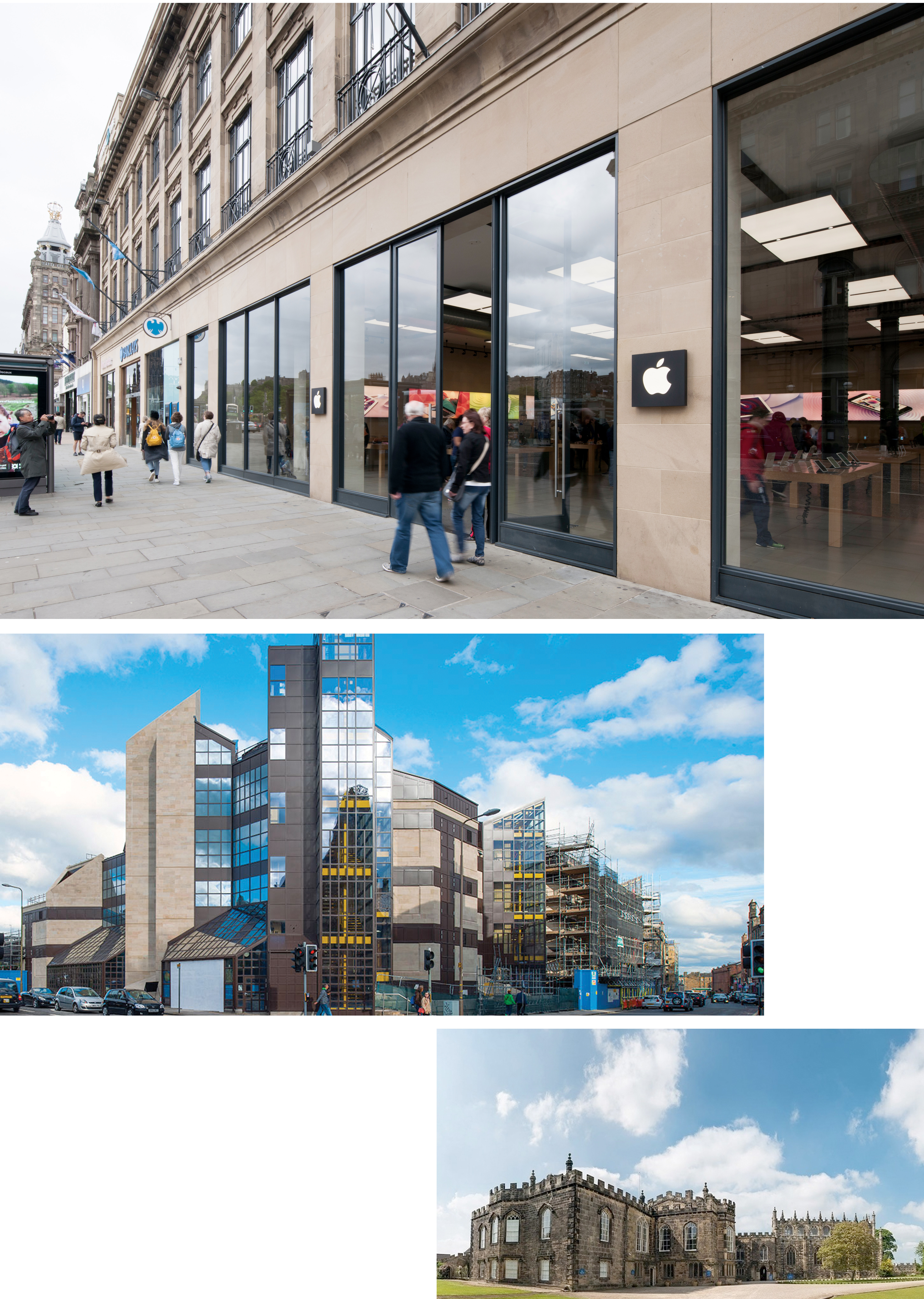Dunhouse Natural Stone: If we want the stone, we need the quarries
You can see from the pictures here why clients and architects want to use British stones for their buildings. The stones come from some of the seven sandstone quarries operated by Dunhouse Quarry Company, which includes Dunhouse Quarry, near Darlington in County Durham (pictured further down), where the company is based.
To have the buildings you need the quarries, and sources of good quality sandstones are becoming increasingly difficult to find from existing quarries.
Yet operators find the legislative burden on extracting stone difficult to navigate and the planning system expensive with an uncertain outcome.

Small quarries have suffered disproportionately as they face the same costs as billion-pound international operators. Dunhouse closed two of its quarries, one in 2013 and one in 2016, because expensive full Environmental Impact Assessments (EIAs) were demanded by the planners even though the working areas proposed were the size of a postage stamp.
Dunhouse owner and Managing Director Paul Allison says: “Our challenge going forward is identifying and being able to exploit new reserves, which involves steering a path through a bureaucratic planning system while guaranteeing a risk free return for our landlords and providing a risk free working environment for our employees. And all of the above while looking after the environment.”
But the process is showing signs of easing. “Planners have recently been given more autonomy when deciding the scope of ROMPS (Reviews of Old Mining Permissions), which is having a positive effect on the cost of reviews, particularly for smaller operations.” Paul says Dunhouse is also benefiting from its membership of the Dimensional Stone Group of the Minerals Products Association (MPA).
In 2015 that Group published a report on the dimension stone industry in the UK targeted at local authority planners. It reminded them of the law regarding dimension stone extraction. (Dimension Stone: an essential UK industry can be downloaded from bit.ly/dimension-stone).
The report states: “Paragraph 142 of the National Planning Policy Framework (NPPF) restates an established Government principle that minerals are essential to support sustainable economic growth and our quality of life. Included in the definition of ‘Minerals of local and national importance’ in the NPPF (Annex2: Glossary) are ‘…local minerals of importance to heritage assets and local distinctiveness’, a description which certainly encompasses dimension stone.”
Paul Allison is full of praise for the MPA. It keeps him up to speed on regulations and quarrying requirements and makes sense of the plethora of regulations. “They’re good at working out what needs to get out to members,” he says.
The industry also has a problem with the age profile of the people working in it, which is increasing all the time. The work can involve being outside in all weathers. Even when it’s inside it uses water and can be cold and wet. It makes it hard to interest a younger generation in it. “We have a recruitment problem,” says Paul, who has invested significantly in creating better working conditions to help make a career in the industry more attractive.
Machinery helps, both in the quarries and the factory and investment by Dunhouse is on-going.
Like most conscientious operators, Dunhouse has invested in equipment and technology to improve working conditions for its 41 employees. Silica dust has been high on the agenda with bespoke dust booths being the only place dry cutting is allowed and most operations are now carried out by mechanical means.
Two, five axes CNCs and a profiling wire saw provide the more intricate masonry, while three semi-automatic workstations capable of working with a variety of tools provide the more mundane splays, weathers, rebates, bullnoses, and so on.
The investment doesn’t stop there, though, as the extraction side has also recently invested in two new Volvo excavators and a new drill rig.

But people remain the core of the business and Dunhouse wants to recruit the best it can and retain and develop them, as it is with its two apprentices. Joe Icke is one of them. He came from the drawing office and is currently learning how to programme the Litox CNC saw. The other is Luke Ellison in the sales and order processing department.
The materials supplied by Dunhouse are some of the UK’s best-known sandstones. As well as Dunhouse (buff and grey) and Blaxter already mentioned, they are Catcastle (buff and grey), Cop Crag, Northumberland Buff, Lazonby, Corsehill, Elswick and Bearl.
The family business, started by Paul’s Great Great Grandfather as memorial mason William Allison & Sons in the 1860s, moved into quarrying with the acquisition of Dunhouse Quarry in 1926 from the Bowes-Lyon family, of which Queen Elizabeth The Queen Mother was a member.
Other quarries have been added over the years through what Paul describes as a mixture of luck and endeavour. Corsehill, for example, was developed for the restoration of the Scottish National Portrait Gallery. Paul’s father bid for the job and won it. Paul says it was luck the job came up and endeavour that won it for Dunhouse. Corsehill is near to a nuclear power station that is being decommissioned, which has made more land available. Dunhouse has been able to buy some of that land and has obtained planning permission to extend the quarry into it.
Much of the stone the company has supplied over the years has been for major commercial developments in the North of England and in Scotland, although it has also supplied stone for projects in the South and for domestic developments, renovations and extensions, ranging from carvings and architectural masonry for mansions to walling for more modest homes.
Like other stone suppliers, Dunhouse often has to produce the stone design detail for its customers and has its own in-house design department, managed by Andrew Jenkinson, as it adapts to market requirements.
It is all part of the fourth industrial revolution that UK stone producers like Dunhouse will remain part of as long as sources of raw materials cannot be choked off by people who want the stone but not the quarries. “Post brexit we hope to continue working towards a planning system that not only protects the environment but encourages extraction of essential minerals,” says Paul.

